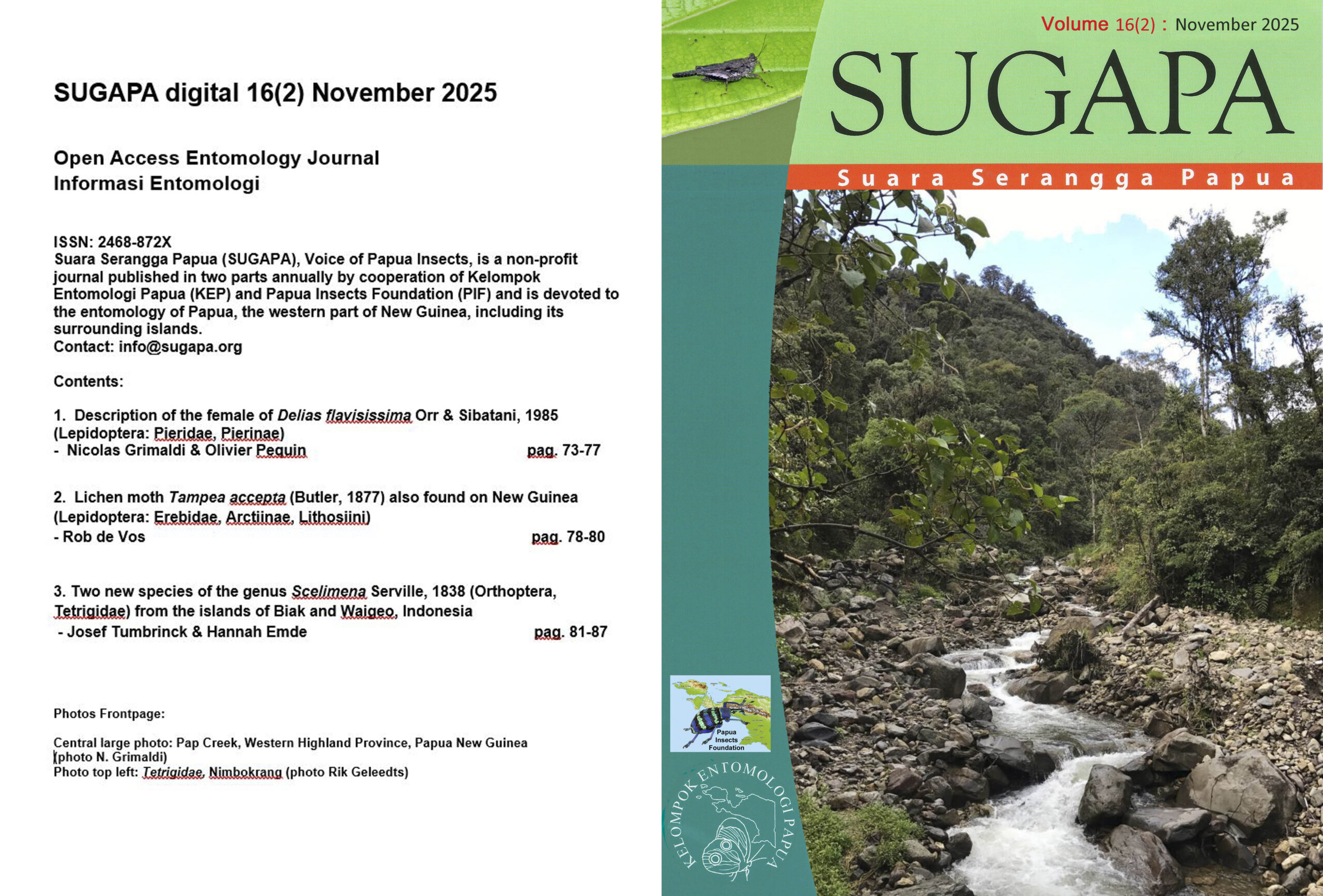3. Student’s corner
In February 2009 three students of the Papua State University (UNIPA, Universitas
Negeri Papua) at Manokwari finished their studies each with a final paper (in
Indonesian language) on an entomological subject, as follows:
Angginta Renta Simanjuntak passed on February 18th 2009 with the title:
Inventarisasi Spesies Capung (Odonata) di Kawasan Cagar Alam
Pegunungan Wondiboi Distrik Rasiei Kabupaten Teluk Wondama
Inventory of Dragonflies and Damselflies Species (Odonata) in the Reserve
Area of the Wondiboi Mountains, District Rasiei,Kabupaten Teluk Wondama
Diah Rikamawanti passed on February 19th 2009 with the title:
Inventarisasi Spesies Kumbang (Coleoptera) di Kawasan Cagar Alam
Pengunungan Wondiboi Distrik Rasiei Kabupaten Teluk Wondama
Inventory of beetle species (Coleoptera) in the Reserve Area of the
Wondiboi Mountains, District Rasiei, Kabupaten Teluk Wondama
Aini Shintawati passed on February 20th 2009 with the title:
Keanekaragaman Spesies Kupu-kupu (Lepidoptera: Papilionoidea)
di Kampung Tandia Distrik Rasiei Kabupaten Teluk Wondama
Diversity of butterflies (Lepidoptera: Papilionoidea) at the Tandlavillaqe,
District Rasiei, Kabupaten Teluk Wondama.
In June 2009 two students of the Universitas Cenderawasih (UNCEN) at Waena,
Jayapura will finish their studies each with a final paper (in Indonesian language)
on an entomological subject, as follows:
Yarius Pakage:
Eksplorasi Keragaman Spesies Belalang Tongkat (Phasmatodea) di
Cagar Alam Pegunungan Cyclops (CAPC) Kabupaten Jayapura
Exploration on the diversity of stickinsects (Phasmatodea) in the Reserve
Area of the Cyclops Mountains, Kabupaten Jayapura
John Kaize:
Studi Perbandingan Keragaman Spesies Capung (Odonata) di dalam
dan di luar Kawasan Taman Nasional Wasur Kabupaten Merauke
Comparison study on the diversity of dragonflies and damselflies (Odonata)
inside and outside the National Reserve Wasur, Kabupaten Merauke
In this and the following issues of SUGAPA attention will be paid on the content
of the above mentioned studies.
Download PDF:

 Open Access Entomology Journal
Open Access Entomology Journal


